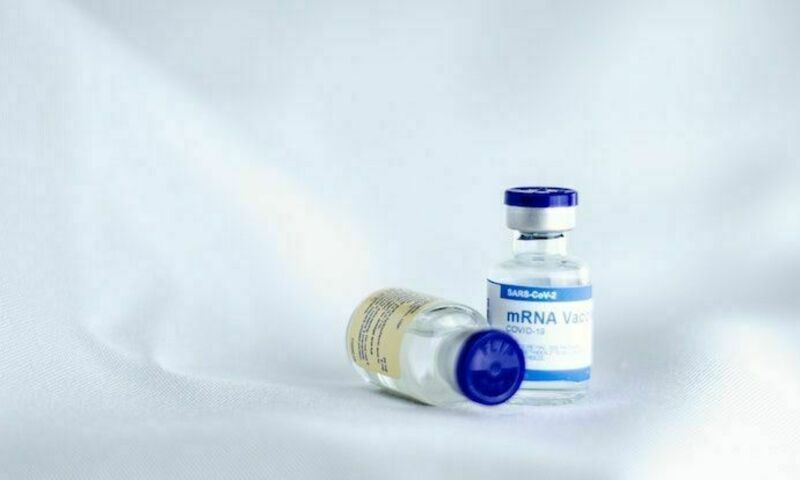One of the more controversial questions for Christians that I have seen a lot of discussion about in the past few months is this: If you are pro-life, how can you support a vaccine developed from a cell line derived from aborted babies?
I think it’s possible to be an advocate for COVID-19 vaccines and be pro-life at the same time. Here’s my reasoning. It is true that there are cell lines that were begun many years ago from aborted fetuses. Whether they were electively aborted or not is not entirely clear. But let’s assume that the cell lines were taken from tissue from electively aborted fetuses. To be clear, the cell line that is used in the Pfizer and Moderna vaccines is different from the one that is used in the Johnson & Johnson and AstraZeneca cell lines. Here’s an important distinction to make — there is a big difference between using fetal remains directly for a treatment and using the tissue from aborted fetuses to start a cell line.
Just for a point of reference, the cell line that is used for the Pfizer and Moderna vaccine is called HEK293. That cell line was begun in the Netherlands in 1973 and has been active for more than 40 years. The reason that’s possible is that once the cell line has begun, it becomes “immortalized,” which means it is capable of dividing, reproducing and continuing on and on indefinitely, if it is in the right laboratory conditions. Once the cell line is immortalized it contains no fetal remains, no fetal parts. The fetal parts are used to jumpstart the cell line.
The particular cell line in question, HEK 293, is used in numerous medical treatments. It’s used in the vaccines for Mumps, Measles, and Rubella (MMR). It’s used in treatments for diabetes, arthritis and many others. If you did not want to have any medical treatment, etc. that did not have this cell line, you would probably have to become something akin to a Christian Science practitioner and step out of medicine altogether. It’s been that impactful in medicine. I wasn’t aware of this until I started looking into the cell line in more detail. That particular cell line was harvested in the Netherlands and began during a time when only abortions in the case of the life of a mother being in danger were legal at the time. Whether that proves that it came from a morally justifiable termination of pregnancy or not, we can probably debate. However, I think the likelihood is that it came from an abortion that most people would recognize as being morally legitimate. Using this to produce these cell lines is quite different than using stem cells from aborted fetuses that are being aborted today to directly treat disease.
What is important is to recognize how this cell line is used in the vaccine itself. There’s a difference in a cell line being used in the production of a vaccine and in the testing of a vaccine. For the Pfizer and Moderna vaccines, the HEK293 cell line was used only to test, in animals, the efficacy of the vaccine. They use a bit of the cell line to see if the antibodies are actually being produced by the vaccine. None of the cell line is used in the actual production of the vaccine. To emphasize that, none of the cell line is used, except for a very small part in the test and there are no fetal remains in any of the vaccines. The Johnson & Johnson and AstraZeneca vaccines are a little bit different because the cell line is used in the production of the vaccine. That cell line (PER C6) was begun in 1985, where cells from the retina of an aborted fetus were harvested and used.
Here’s how I would describe the ethics of the situation. There’s a difference between impact and complicity. Just because something has an impact on a medical practice, doesn’t automatically make you complicit with the evil action. For example, one of the other well-known cell lines that has been produced, was harvested from a well-known African American woman, Henrietta Lacks, who had a tumor from which the cell line (HELA) was developed. This was done some time ago, when consent was not what it was today. Being African American, her consent was considered irrelevant in any case at that time. As a result, the cell line is morally tainted because consent was not properly obtained, but the cell line has continued to be useful in treatments for some time. Even when none of us were complicit in the lack of consent, none of us who benefited from that are complicit in the abortion that took place to form these cell lines in the current vaccines.
Another example might be during World War II, the Nazis did some grisly experiments on Jews in the concentration camps. Years later, there was a lot of debate over whether we ought morally to be able to use the data that was gathered from those experiments. If those experiments were going on today, we would say whether to use the data or not is completely beside the point — you have to stop the experiments. I would say to the use of the cell lines from aborted fetuses, if we were using aborted fetuses today to start cell lines, then we ought to stop doing that. Whether we can use the cell line or not is beside the point, we have to stop the practice.
But we have stopped the practice. It is true that stem cells and fetal tissue from aborted fetuses are still being used for some things, but almost all stem cell treatments are using adult stem cells, and using fetal tissue for direct treatments is not the same thing as jump starting a cell line. It’s the cell line that was begun years and years ago and has been immortalized. I think the proximity to that immoral act, if it was indeed that at all (see above the cell line HEK 293 may have come from a morally justifiable abortion), which I think is questionable, is so distant and so far removed that I think it takes away most allegations of complicity and renders them groundless.
Another way to think about it is like this: I heard a medical doctor who is Asian describe that some of the railways across the U.S. were built on the backs of some Asian migrants who were deeply mistreated. Now, some of the area where that was built, they have new tracks and new trains, but they are using some of the groundwork that was laid unjustly. But in rebuilding it and using what is there, it is not complicit to the wrongs that were first done. Just because you benefit from an illicit practice doesn’t necessarily give you guilt or complicity in it. In a fallen world, complete distancing from all evil is not possible. Criteria for complicity include, as mentioned, that the original action is sufficiently distanced from the original evil act, that the association with the past or present evil act is uncertain, that the intent is for good and that the action does not reward, perpetuate, justify or cooperate with the original evil. (See the statement by CMDA on moral complicity.)
In summary, there is nothing problematic about the Pfizer or Moderna vaccines since they do not contain fetal materials and the cell line that was used likely came from a morally justifiable termination of pregnancy. Though the cell line for the Johnson & Johnson and AstraZeneca vaccines is used differently, in my view, those do not pose a problem either. This is because there are no fetal materials in the vaccines, these vaccines do not encourage abortions for medical research, nor are they complicit in elective abortions in such a way as to make the person receiving the vaccines culpable for association with evil.
 Biola University
Biola University

.jpg)
.jpg)

